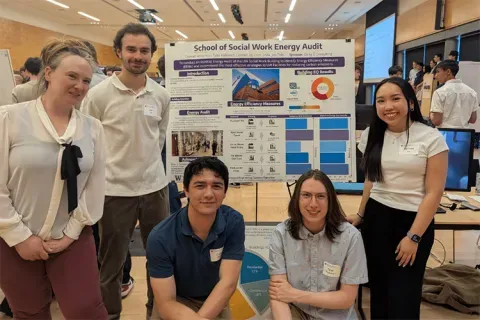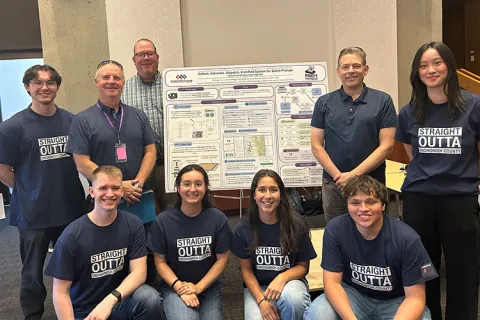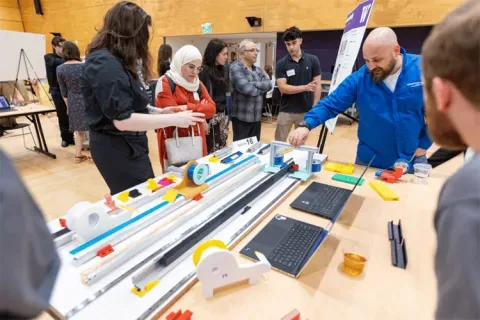Atom Computing
Exploration of Wire Gate Scheme for Neutral Atom Based Quantum Computers
Neutral atom (NA) array based quantum computing platforms are known for their potential to scale to a large number of qubits with flexible geometric configurations with high fidelity gate operations. Rydberg blockade based two and multi -qubit gates have become a staple to enable high fidelity entanglement operations in NA based platforms. However, the long-range nature of Rydberg blockade interaction limits the possibility of parallel implementation of two-qubit gates across an NA array which in turn limits the computation speed of an NA quantum computing device. This student team worked to circumvent the limitation by exploring pulse design of two-qubit entangling operations using more than two qubits in a wire gate layout similar to the one proposed in the paper https://arxiv.org/abs/2203.01545. This student team worked to explore possible pulse shapes acting on participating atoms to study possible advantages in speed while maintaining high fidelity and robustness to noise and errors. This student team worked to perform an extensive exploration of possible pulse shapes on wire gate atoms with thorough simulations that characterize operating fidelity and robustness to various error and noise sources. This involved an iterative cycle of adjusting pulse shaping optimization setup, run pulse shaping optimization program, run characterization simulation program, analyze results and writeup. Atom Computing provided the pulse shaping optimization program as well as characterization simulation program. Atom Computing also provided introductory presentations to the student team with necessary knowledge and context. Throughout the 10 week program, Atom Computing organized weekly discussion sessions to discuss results and plan forward. The outcome this student team worked to achieve was to open up possible new architecture and design trade space in NA based quantum computers. The students worked to provide Atom Computing with a detailed writeup of an extensive exploration of possible pulse shapes on wire gate atoms with thorough simulations that characterize the fidelity and robustness to various error and noise sources. The student team also worked to obtain high performance pulses in terms of fidelity and speed.
Faculty Adviser(s)
Sara Mouradian, Electrical & Computer Engineering
Brant Bowers, Electrical & Computer Engineering
Related News

Mon, 10/13/2025 | UW Mechanical Engineering
Capstone collaboration leads to award
An ME capstone team received first place for its energy audit of the UW School of Social Work building.

Thu, 07/17/2025
UW engineering students develop smart ballot solution
UW engineering students develop smart technology solution to improve ballot collection for Snohomish County.

Mon, 07/07/2025 | UW Mechanical Engineering
Capstone creations
Students displayed innovative capstone design projects at the 2025 expo.

Fri, 09/20/2024 | UW Civil & Environmental Engineering
Smarter irrigation for a greener UW
A new project combines satellite data with ground sensors to conserve water and create a more sustainable campus environment.